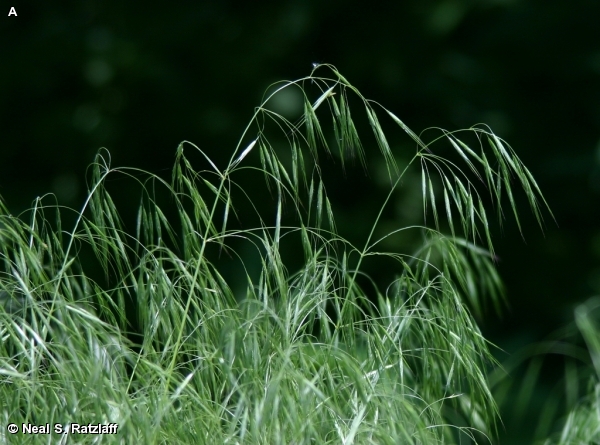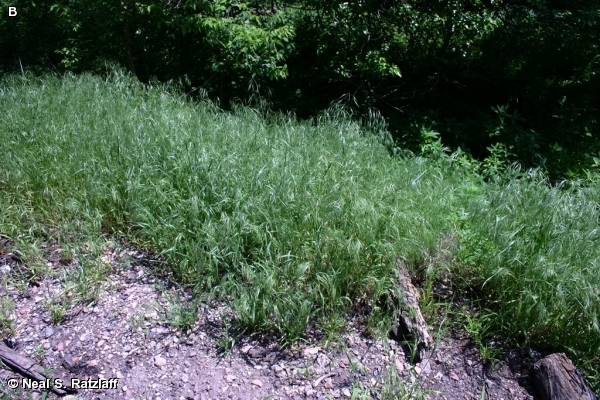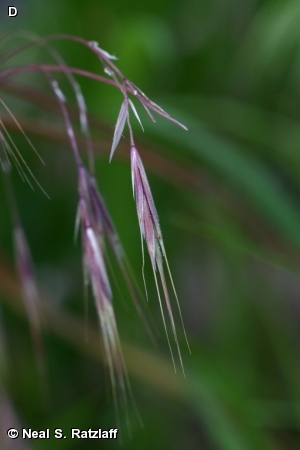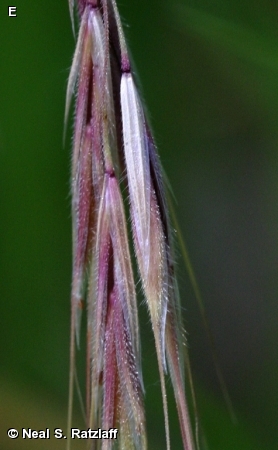
This introduced annual has weak, upright stems from 9-24 inches tall (B). Leaf blades and and often the sheaths are covered with soft hairs. The open, nodding, many branched panicles from 2-6 inches long bear numerous spikelets composed of 4-7 florets (A). The lemma of each floret is covered with soft downy hairs and tipped with an awn up to 3/4 inch long (D,E). As Downy Brome matures in late spring, it develops a reddish-pink coloration which makes patches of it quite easy to identify (C).
Common in waste areas, fields, roadsides, overgrazed pastures and other disturbed sites. It occurs in Fontenelle Forest in disturbed areas along the railroad tracks. Look for it when you cross the tracks from the floodplain into Mormon Hollow. Flowering occurs in May and June.
Early in the season Japanese Brome (Bromus japonicus) looks very much like Downy Brome. As it matures Downy Brome turns a distinct reddish-pink color (C) while Japanese Brome simply turns brown. Close inspection of Downy Brome florets will reveal many fine “downy” hairs on the lemmas (E) while the florets of Japanese Brome are hairless. To date Downy Brome has been seen only at RR track crossings and not elsewhere in Fontenelle Forest. It is to be expected, but has not been observed at Neale Woods.
The long awns of Downy Brome may cause sores in the eyes and mouths of animals grazing on it. It is palatable only for a very short time in early spring.
Other common names include Cheat and Cheatgrass.
The content of NatureSearch is provided by dedicated volunteer Naturalists of Fontenelle Forest who strive to provide the most accurate information available. Contributors of the images retain their copyrights. The point of contact for this page is: Neal Ratzlaff.




